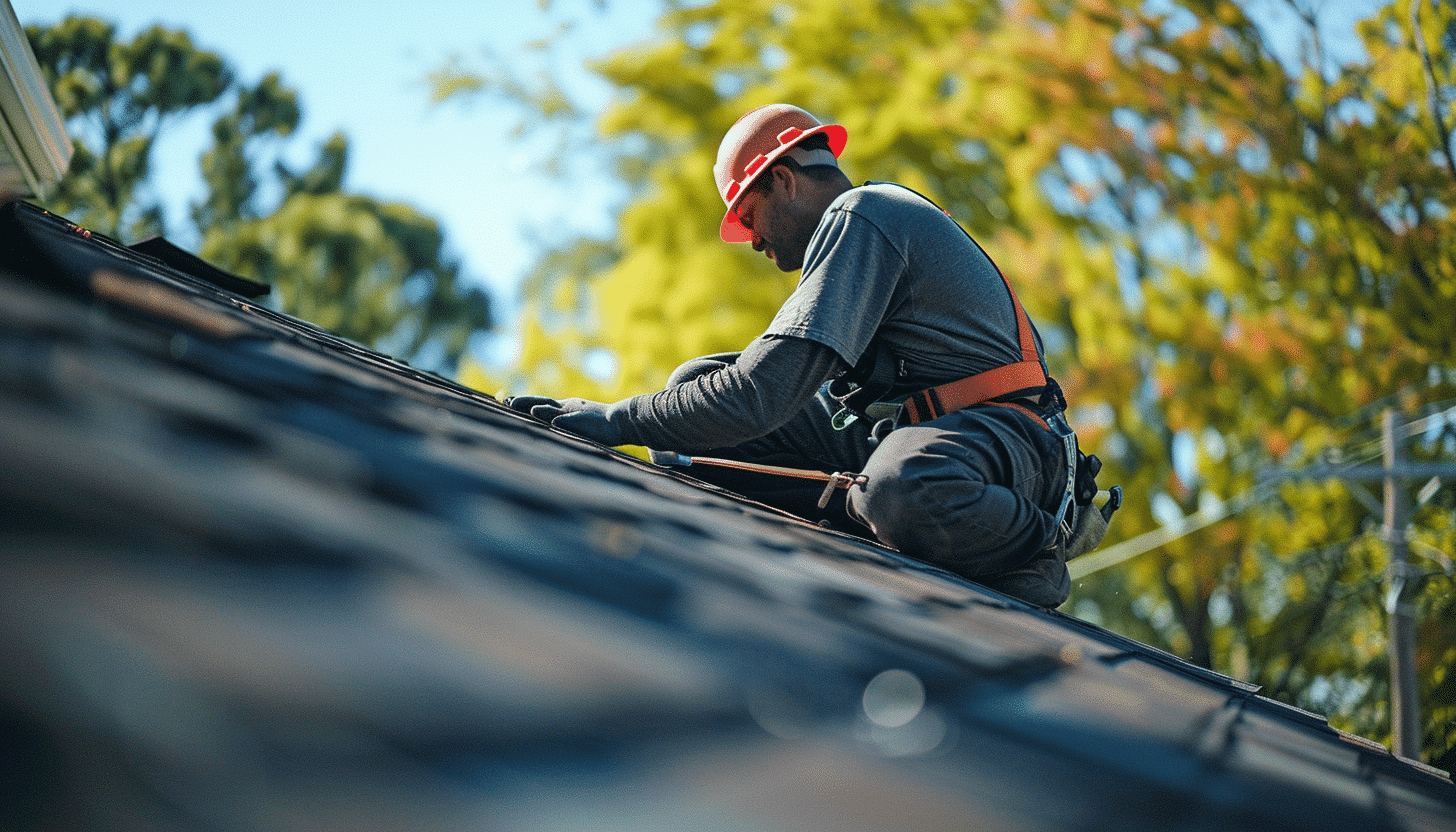Signs of Storm Damage on Roofs: What to Look For
Storms can wreak havoc on roofs, leaving behind a trail of damage that, if unnoticed, can lead to significant issues. Identifying signs of storm damage on roofs is crucial for maintaining the structural integrity and longevity of your home. This blog post delves into how to spot these signs, ensuring you can take timely action to protect your investment.
Why Storm Damage on Roofs is a Critical Concern
Roofs are the first line of defense against the elements. When a storm hits, it can cause various types of damage, from minor issues to significant structural problems. Recognizing these signs early can prevent further deterioration and costly repairs.

Common Signs of Storm Damage on Roofs
1. Missing or Damaged Shingles
One of the most obvious signs of storm damage is missing or damaged shingles. High winds can lift shingles, and hail can cause them to crack or break.
- Look for:
- Shingles scattered around your yard.
- Visible gaps on your roof.
- Shingles that appear cracked, curled, or torn.
2. Dents or Punctures
Hailstorms can leave behind dents or punctures in roofing materials, especially in metal roofs or asphalt shingles.
- Check for:
- Dented metal flashings or vents.
- Punctures in shingles or other roofing materials.
3. Granule Loss
Asphalt shingles have a layer of granules that protect them from UV rays. Storms can dislodge these granules, reducing the shingles’ lifespan.
- Signs include:
- Granules in your gutters or downspouts.
- Bald spots on shingles.
4. Leaks and Water Damage
Water can infiltrate your home through damaged roofs, leading to leaks and water damage.
- Be aware of:
- Water stains on your ceilings or walls.
- Damp or musty odors in your attic.
- Visible mold growth.
5. Sagging Roof Deck
A sagging roof deck indicates severe structural damage and requires immediate attention.
- Noticeable by:
- Uneven roof lines.
- Areas of the roof that appear to be sinking.

Steps to Take After Identifying Storm Damage
1. Conduct a Preliminary Inspection
After a storm, safely inspect your roof from the ground using binoculars or a camera with a zoom feature. Look for the signs mentioned above.
2. Document the Damage
Take photos and notes of all visible damage. This documentation is crucial for insurance claims.
3. Contact a Professional Roofing Contractor
Engage a professional roofing contractor to perform a thorough inspection and provide an estimate for repairs. A professional can spot issues that might not be visible to the untrained eye.
4. File an Insurance Claim
Submit your documentation and estimates to your insurance company to initiate a claim for the damages.

Preventative Measures for Future Storms
1. Regular Roof Maintenance
Regular maintenance can help identify potential issues before they become significant problems.
- Tasks include:
- Cleaning gutters and downspouts.
- Trimming overhanging branches.
- Inspecting and repairing loose or damaged shingles.
2. Install Storm-Resistant Materials
Consider upgrading to more durable roofing materials designed to withstand severe weather conditions.
- Options include:
- Impact-resistant shingles.
- Metal roofing.
- Rubber roofing systems.

FAQs
Q: How often should I inspect my roof for storm damage?
A: It’s recommended to inspect your roof at least twice a year, in the spring and fall, and after any significant storm.
Q: Can I perform roof repairs myself?
A: While minor repairs might seem manageable, it’s best to hire a professional to ensure the work is done safely and correctly.
Q: How long do I have to file an insurance claim for storm damage?
A: This varies by insurance policy. Check with your insurance provider for specific timelines and requirements.
Q: What should I do if I can’t see the damage from the ground?
A: If you’re unable to assess the damage yourself, contact a professional roofing contractor for a detailed inspection.
Q: Are there any specific signs of storm damage on flat roofs?
A: Yes, look for pooling water, bubbles in the roofing material, and damage to the roof membrane or flashing.
Q: How can I prevent future storm damage to my roof?
A: Regular maintenance, timely repairs, and using storm-resistant materials can significantly reduce the risk of storm damage.
Conclusion
Identifying signs of storm damage on roofs promptly can save you from costly repairs and extensive damage. Regular inspections, maintenance, and knowing what to look for can keep your roof in top condition and ensure your home remains protected from the elements. If you suspect storm damage, don’t hesitate to contact a professional roofing contractor to assess and address any issues.
For professional roof inspection and repair services, contact Sugar Land Roofing at (832) 944-7663. Our experienced team is ready to help you maintain the integrity and safety of your home.

 (832) 944-7663
(832) 944-7663